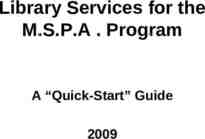Acute Rehab versus Sub-acute Rehab: The AHA/ASA Weighs In… Again
21 Slides4.95 MB
Acute Rehab versus Sub-acute Rehab: The AHA/ASA Weighs In Again Sue Pugh, MSN, RN CRRN, CNRN, CNS-BC, FAHA
Disclosure: Husband is Director of the Brain Injury Association Co-writer for the American Heart Association/American Stroke Association Guidelines for Adult Stroke Rehabilitation and Recovery 2016 AND Addendum 2017
Objectives: The learner will be able to . 1. delineate the difference between the AHA/ASA levels of evidence. 2. verbalize the difference between inpatient acute, sub-acute, outpatient, and home health rehabilitation settings. 3. select the recommended level of rehabilitation care based on the AHA/ASA guidelines.
Levels of Recommendations:
Original recommendations: Postacute Care Stroke survivors who are unable to return home because of residual disability or nursing and medical needs after stroke are typically admitted to either an acute inpatient rehabilitation facility (IRF) or a skilled nursing facility (SNF) and occasionally to other types of post acute facilities such a long-term acute care hospital. The selection of post acute facility type has been shown to vary considerably georgraphicially2-4 and to be influenced by the proximity of the nearest IRF to the patient’s residence.
Level of evidence for recommendation:
An elaboration:
Explaining the differences between rehab settings:
Additional Original Recommendation: Acute stroke patients who have on going needs for skilled nursing, care monitored by a physician, and have need for multiple therapeutic services, should receive rehabilitation in an inpatient setting. This setting includes skilled nursing facilities. (SNF)
Home health vs. outpatient rehabilitation Certified as homebound Only 60 days of services Can include nursing assistant services Equipment vs. practicing in the ‘REAL’ situation
The outpatient setting:
The home setting:
This Photo by Unknown Author is licensed under CC BY-SA
The Addendum Benefits of acute inpatient rehabilitation care: Multiple studies showing benefits of inpatient care versus SNF’s. They are all observational studies, but the findings are consistent. However, SNF’s have value as well and this was not addressed.
The SNF benefit Patients that can not tolerate 3 hours of therapy per day Geographic advantage of SNF’s over IRF’s 20% to 31% of stroke survivors receive post acute rehab from SNF’s New recommendations were created
AHA/ASA additional guidelines Recommendations: Skilled Nursing Facility Class Level of Evidence SNF care can be useful for individuals who: (1) are unable to return directly home after hospitalization for a stroke and do not qualify for acute inpatient rehabilitation because of limited rehabilitation potential or inability to tolerate intensive rehabilitation; (2) do not require an intensive rehabilitation program; or, (3) lack geographic access to IRF care. IIa C
Second recommendation: Recommendations: Skilled Nursing Facility Class Level of Evidence SNF care can be useful for individuals who have completed a course of rehabilitation in an IRF but are unable to return directly home afterward because of ongoing rehabilitation needs, medical requirements, or personal care needs. IIa C
Improving Medicare Post-Acute Care Transformation Act of 2014 (HR 4994) Intended to change and improve Medicare’s post acute care services and how they are reported. The future likely holds a ‘blurring of the distinctions between these levels of care’ may occur in the coming years.
Case example 1: 65 year old male Right sided weakness Difficulty walking and coming to standing position Needs some assistance with dressing Can speak, but sometimes can’t find the right words Was about to retire from work in 2 months Wife is in good health and already retired Type of rehabilitation setting recommended?
Case example 2: 42 year old female Unable to move left arm and leg Can speak clearly, but has fallen twice in the hospital Incontinent of urine Prior smoker, developed pneumonia in hospital and required a trach Over weight and was disabled due to a prior automobile accident that resulted in chronic back pain Has one daughter who is married and in nursing school in another state Type of rehabilitation?
Case example 3: 72 year old male Left leg weak, but can walk with walker/cane Left arm without weakness Able to perform all ADL’s independently except putting on shoes and socks where he requires some assistance Divorced and lives alone Daughter lives down the street with husband and 2 teenage children Type of rehabilitation?


























